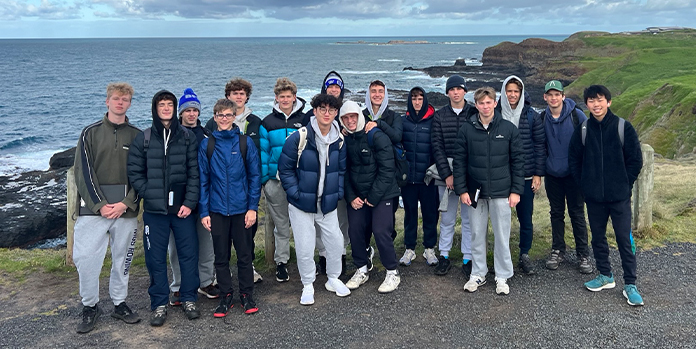This article was written by Leo Li, Year 11.
Tourism is a huge part our lives without us even realising it. This semester Year 11 Geography students have been studying the importance of tourism, its changes over time as well as the impacts of tourism and how it is managed. We looked at three different case studies at different scales: the Great Barrier Reef, Thailand, and Phillip Island. This helped us to put into perspective the importance of tourism to local communities around the world.
The importance of field work
Fieldwork is an essential part of learning in Geography as it allows us to see first-hand the concepts we have studied and test theories.
This is why our class spent two days on Phillip Island to observe and collect data that related to the hypothesis we devised before the trip. Our hypothesis was “The positive impacts of tourism outweigh the negative impacts of tourism on Phillip Island”.
We gathered primary data in many different ways, including photographs, traffic counts and field sketches.
What surprised me the most were the results of the traffic and pedestrian counts. The disparity between the numbers on Sunday and Monday were unexpected. This indicates a problem that we learnt about in class: the seasonal nature of tourism. The tourism industry on Phillip Island generates around 44 per cent of the region’s annual economy, and employment of approximately 5,900 people. If tourism in this region only thrives for a few months each year or on only certain days of the week, there is no stability for businesses and their employees, creating an imbalance within the local community.
Balancing economic, social and environmental benefits
As part of our primary data collection, we learnt about Phillip Island Nature Parks’ efforts to improve other balances relating to tourism on the island.
For example, the money generated at the Penguin Parade goes back into new facilities, protecting wildlife and funding research, such as GPS tracking devices to monitor the impacts of climate change through the penguin’s patterns of behaviour. Housing near the Penguin Parade has also been reduced through a state government buy back scheme. Prior to this, the penguins were at risk due to the hazards of cars, pets, and loss of habitat, but after the buy back scheme, not only did the population stabilize but it started to increase. This signifies the importance of balancing the economic and social benefits of tourism with the needs of environment.
Although Phillip Island seems small compared to the vast world that we live in, I believe this trip opened our eyes to the significance of tourism, and how tourist destinations around the world need to search for sustainable ways to function while also providing tourists with unforgettable experiences.



